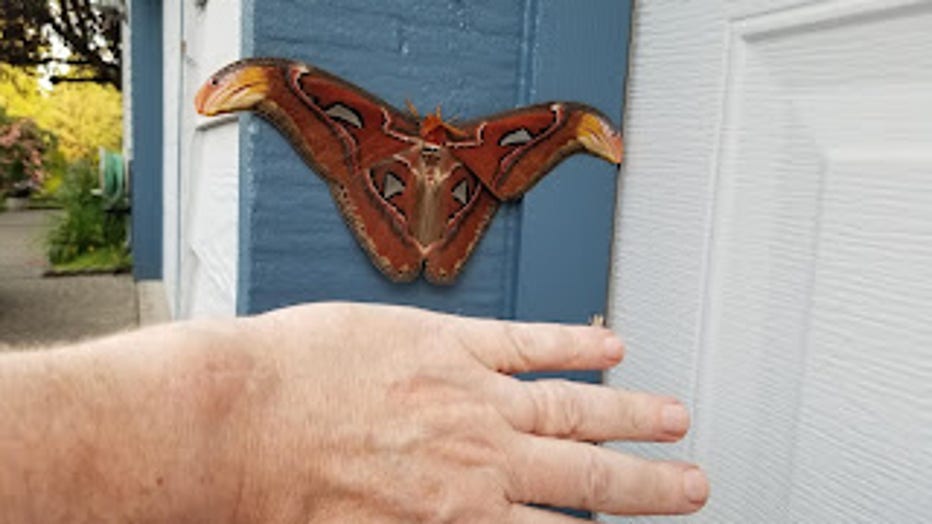World’s largest moth found in Bellevue, WSDA says
World's largest moth found in Bellevue
Washington state scientists are asking the public to be on the lookout and report sightings of the Atlas moth, which is the world's largest moth, that was found in Bellevue.
BELLEVUE, Wash. - Washington state scientists are asking the public to be on the lookout and to report sightings after the world's largest known moth was recently found in Bellevue.
The Washington State Department of Agriculture said a University of Washington professor initially reported the moth on July 7. It was found on a garage in Bellevue.

The Atlas moth was reported to the Washington State Department of Agriculture by a University of Washington professor on July 7. (Washington State Department of Agriculture)
Entomologists identified it as an Atlas moth and the USDA confirmed it later that month.
It is believed to be the first confirmed discovery of the pest in the United States.
"This is a ‘gee-whiz’ type of insect because it is so large," Sven Spichiger, WSDA managing entomologist, said. "Even if you aren’t on the lookout for insects, this is the type that people get their phones out and take a picture of – they are that striking."
The Atlas moth is one of the world’s largest known moth and has a wingspan of up to almost 10 inches.

The non-native atlas moth compared with large moths found in North America. (Washington State Department of Agriculture)
Officials said the moth is also a federally quarantined pest, which means it is illegal to obtain, harbor, rear, or sell live moths whether adults, eggs, larvae, or pupae without a permit from the USDA.
"This is normally a tropical moth. We are not sure it could survive here," Spichiger said. "USDA is gathering available scientific and technical information about this moth and will provide response recommendations, but in the meantime, we hope residents will help us learn if this was a one-off escapee or whether there might indeed be a population in the area."
The moth does not pose a public health threat and scientists are looking to see if there are additional pests in the area.
Entomologist at UW talks about world's largest moth found in Bellevue
We're learning more about one of the world's largest moth species that was spotted in Bellevue.
Anyone who believes they’ve seen the moth in Washington, is encouraged to send a photo to pestprogram@agr.wa.gov for identification and include the location where it was spotted.
There have not been any reports anywhere else in the U.S., but anyone who has found it outside of Washington state, is asked to take a picture of it, document the location and report it to the state's State Plant Regulatory Official or State Plant Health Director.

